Pinker peace creak
« previous post | next post »
As Breffni noted yesterday in a comment on "Male vocal fry", the young woman introducing Steven Pinker's speech at the 2015 Nobel Peace Prize Forum frequently exhibits lots of period-doubling — what the popular press generally calls "vocal fry", though "creaky voice due to period-doubling" would be a more correct description.
Here's the start of the introduction, with red boldface used to mark the syllables that show period doubling:
The Nobel Peace Prize Forum is thrilled to have with us today doctor Steven Pinker, a Canadian-born U.S. experimental psychologist, cognitive scientist, linguist, and popular science author.
Doctor Pinker is a professor at Harvard, in the department of psychology, …
3 out of her first 40 words — and essentially all of her phrase-final falls — are thus marked.
Breffni puts this video in evidence for the "the existence of a characteristic creaky-voice pattern (not just overall prevalence) among some groups of young (mainly American?) women". So score one for Breffni's powers of observation.
But wait. If we look for similar phenomena once Steven Pinker starts talking, we only need to look at 21 words to find three instances of period-doubling:
Thank you very much.
Believe it or not — and I know most people do not — violence has been in decline for long stretches of time, …
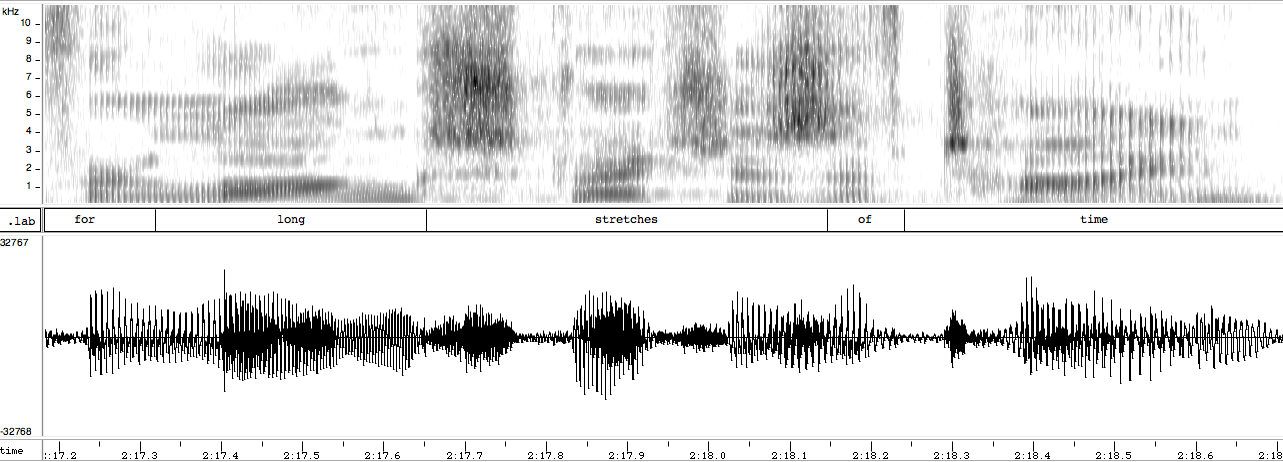 And if Pinker's period-doubling is somehow qualitatively different from the introducer's period-doubling, it's not obvious from the waveforms and spectrograms what the different is.
And if Pinker's period-doubling is somehow qualitatively different from the introducer's period-doubling, it's not obvious from the waveforms and spectrograms what the different is.
I agree that the phenomenon seems more noticeable in the speech of the woman doing the introduction. (By the way, does anyone know who she is? The YouTube site doesn't seem to tell us.)
But the fact that we notice her period-doubling more than his period-doubling might be a fact about our perceptions rather than a fact about their productions.
What kind of perceptual fact could it be? I'm not sure. The most obvious hypothesis is that an octave-lowering pitch jump in a phrase-final fall in a female pitch range is more striking than the same sort of jump in a male pitch range. But that idea is not wonderfully persuasive in this case, because the introducer's f0 quantiles in the relevant range (say, the 20th to 40th percentiles) are only about 30% higher than Pinker's:
So maybe Breffni is right that there's a "characteristic creaky-voice pattern (not just overall prevalence) among some groups of young (mainly American?) women". But if so, we need to figure out what that "characteristic creaky voice pattern" is.
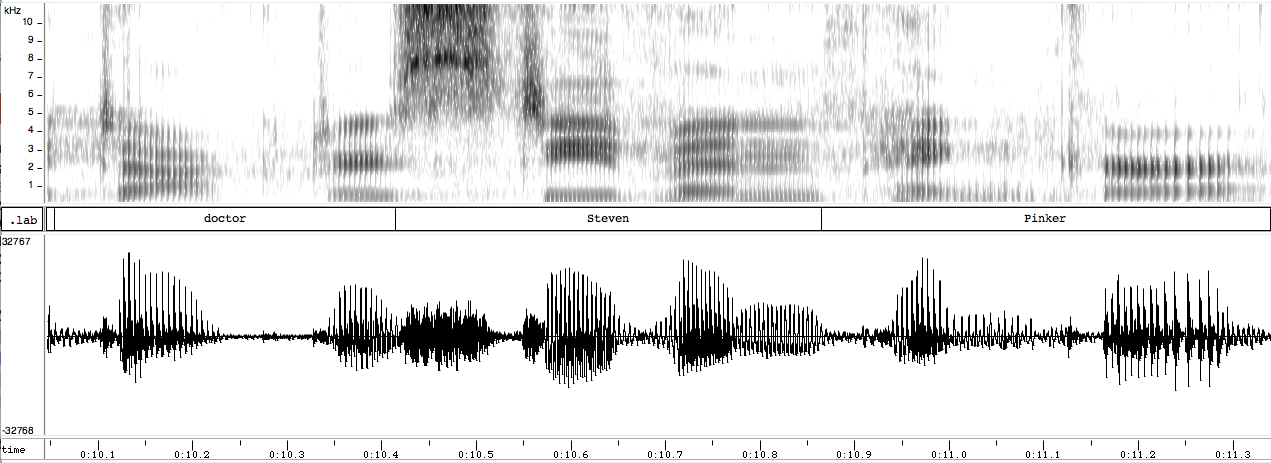
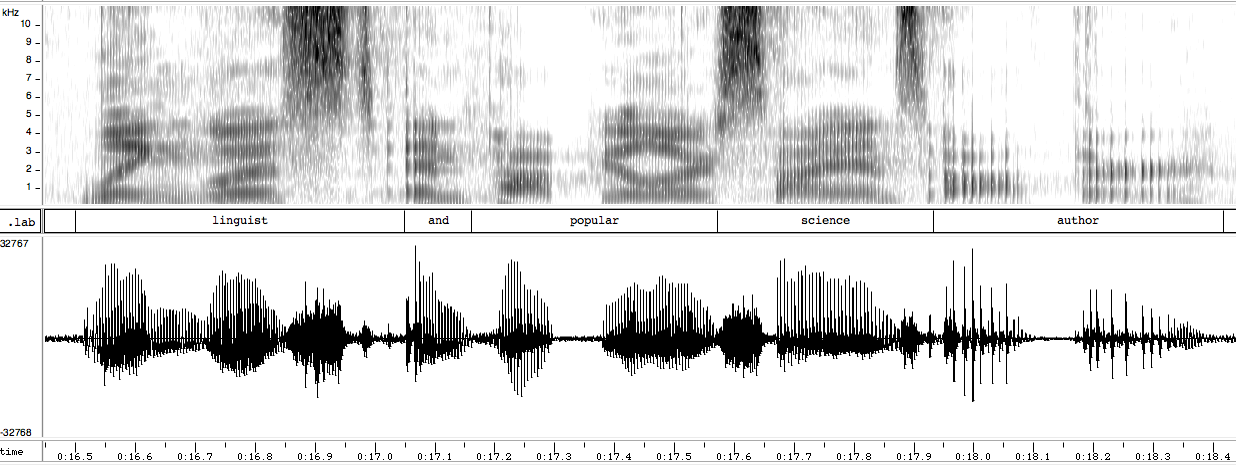
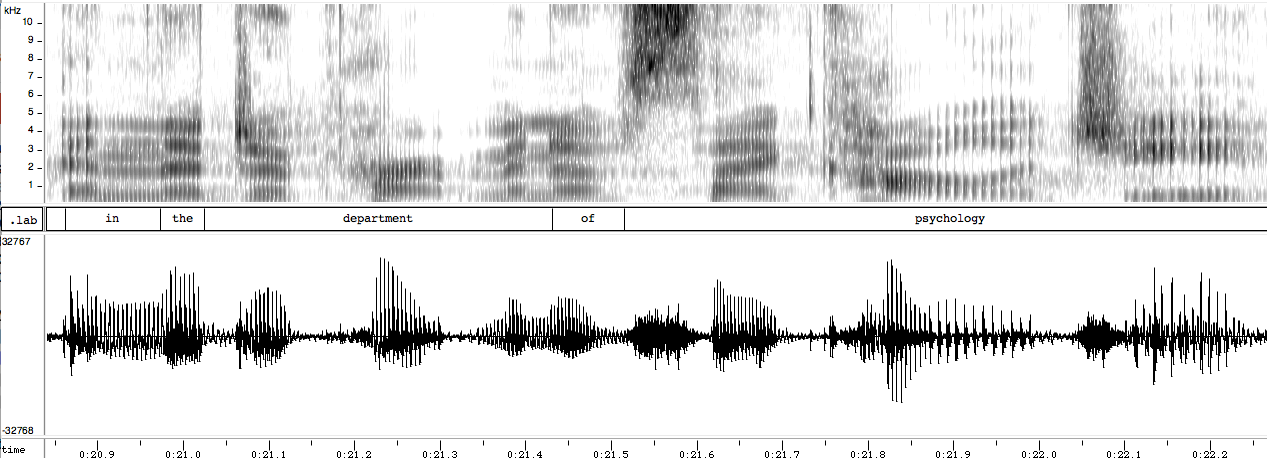
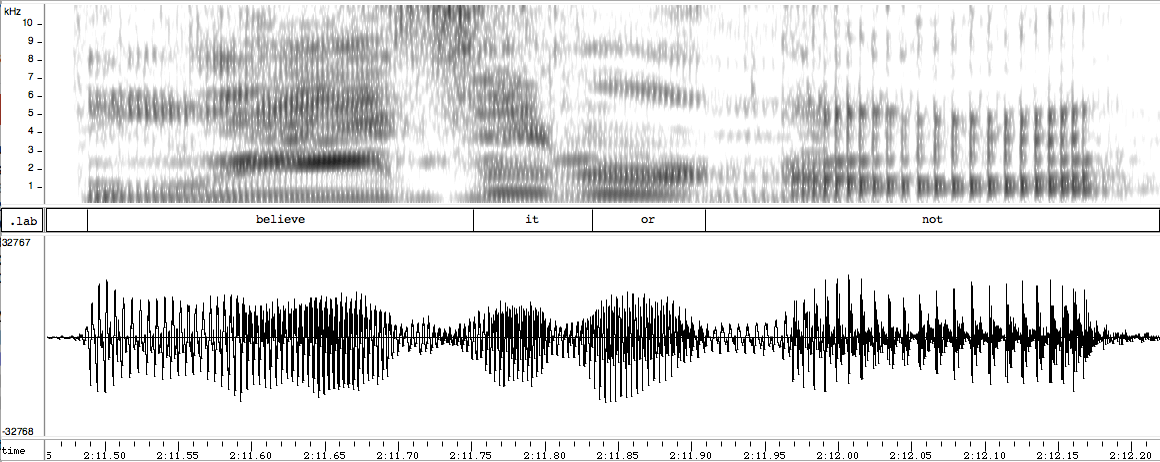

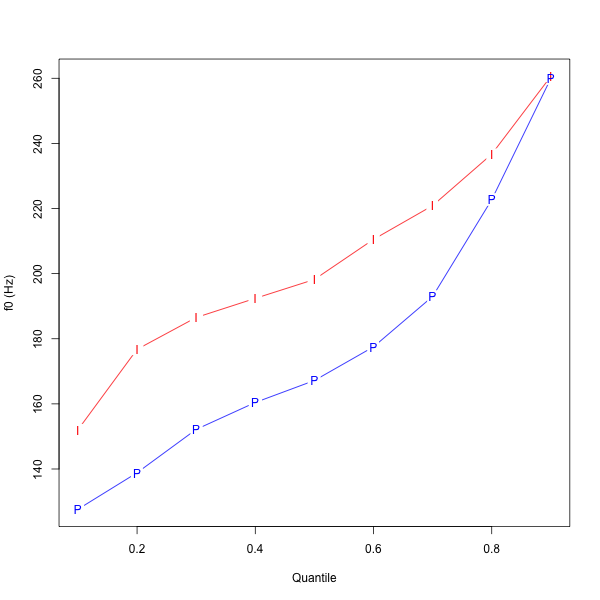
Aaron Toivo said,
July 24, 2015 @ 8:37 pm
Could it be that we notice it more in female voices because it happens less frequently in them, and is thus more unexpected?
Guy said,
July 24, 2015 @ 8:38 pm
My guess is that, for whatever reason, many people are conditioned to think men are "supposed" to sound this way and so it's incorporated into a holistic perception of "the sound of this person's voice" more seamlessly, whereas it stands out more for women for these listeners who are less likely to expect it in a female voice. Try this experiment – listen to each of the speakers pretending that you "know" they are the other gender, and that they perhaps have spightly gender-atypical voices.
I have no statistical data at all, but I would consider one hypothesis for testing: in recent history, women were much less likely than men to exhibit vocal fry, but recently some women have begun to adopt a previously "masculine" speaking style that many now considered to be unmarked. Since people don't "hear" phrase-final creak in men's voices, this movement toward gender uniformity is perceived as a trend among women.
D.O. said,
July 24, 2015 @ 9:28 pm
I don't know how to read a spectrogram, so can anyone who knows check whether the difference in F0 because of the vocal fry creates a large change not with the median F0 for each speaker, but with F0 for the preceding stressed vowel.
Bloix said,
July 24, 2015 @ 9:30 pm
Guy is a wrong as wrong can be. The annoying part of creaky voice to in young women is that it sounds like an attempt to be sexy. It's the vocal equivalent of a duck face. For an older person like me, the reaction is, you're not on TV, stop trying to be sexy and start talking like a grown-up.
This speaker does not display that sort iof creaky voice. She has some creaky voice at the end of sentences or phrases, before pauses , without any drawling or drawing-out of the words (and btw without uptalk). Creaky voice in that context is common in adults of both sexes and is not annoying.
Here is an example of annoying creaky voice:
https://www.youtube.com/watch?v=cx6kV8CfeLs
The clip is full of it – one good example is around 3:15-3:20 ("such a fun, sexy dance song")
Sky Onosson said,
July 24, 2015 @ 9:53 pm
Although this is a very small sample, one thing that I notice in comparing the three instances of creaky voice for each speaker is that there is a clear distinction in the pitch contours that accompany them.
For Steven Pinker, each occurrence of it takes place over a fairly clear pitch contour – an uptalk-like rise for the first 'not', a sharp decline on the second 'not', and another uptalk-like rise on 'time'.
In contrast, the female speaker uses creak pretty exclusively at the bottom of her pitch range, and with a pretty flat pitch contour in each case.
It's fairly interesting that the combination of uptalk and creak is found with the male speaker, and would likely have gone by uncommented for most listeners.
Jerry Friedman said,
July 24, 2015 @ 9:57 pm
Guy: Back in February I did a scientific study of that hypothesis. In the first video I found, Dorothy Fuldheim interviewing Jerry Rubin, the woman didn't have any vocal fry or creak that I could detect. In the second, Faye Emerson and Steve Allen, the woman had a lot of fry. I decided that was enough in the way of statistical data.
That was in the comments of this Language Log thread.
Next: What's My Line?
Jeff W said,
July 25, 2015 @ 1:31 am
The lower third that appears starting at 0:10 of the video identifies the speaker as “Katie Lovrien Peace Scholar.” This Minnesota Public Radio page about the talk identifies her as “St. Olaf College graduate Katie Lovrien” and the introduction in the audio on that page identifies her as “2015 Olaf College Honors Graduate Katie Lovrien.”
Language Log » Pinker peace creak - PeaceWords.Us said,
July 25, 2015 @ 2:25 am
[…] Language Log » Pinker peace creak […]
Geoffrey K. Pullum said,
July 25, 2015 @ 2:29 am
The introducer is Katie Lovrien, a rising senior at St. Olaf College in Northfield, Minnesota, where she studies social work and Latin American studies.
Jarek Weckwerth said,
July 25, 2015 @ 8:06 am
(This is something that has just occurred to me now, so maybe I should do some research first before floating it here, but…) I have the impression that the f0 doubling is particularly associated with open vowels and syllabic /r/ in AmE (the vowels of LOT, THOUGHT, perhaps TRAP and PRICE, and NURSE/lettER in terms of John Wells's keywords). I think it adds to the auditory quality of AmE that some people tend to describe as being "laid back" and "cool".
Rachel said,
July 25, 2015 @ 8:24 am
If anyone cares for more bullshit about vocal fry, there is Naomi Wolf's recent Guardian article, entitled 'Young women, give up the vocal fry and reclaim your strong female voice'. She described it as having 'joined more traditional young-women voice mannerisms' to make young women sound tentative, non-serious, you know the drill. As usual the actual linguistic claims (mostly made in an embedded video from actress Faith Salie) are vague or false (i.e. all bullshit).
Bloix said,
July 27, 2015 @ 5:03 pm
The correct line appears to be that a phenomenon that is widely observed by lay people is not confirmed by some very crude and gross-grained "scientific" analysis, and therefore it must necessarily be sexist bull-shit.
Laura Morland said,
July 28, 2015 @ 6:53 am
How long has "male vocal fry" been going on?
Is it possible that men (at least American men) have been doing it for quite a while? As I remarked on the LL Facebook page, I happened to be listening to a recording of Tommy Dorsey speaking (actually scripted lines) in 1941, and to my untrained ear he is employing "vocal fry" (or "phrase-final period doubling"), as he speaks during the song "Talulah":
https://youtu.be/LzXpnIZIzxg